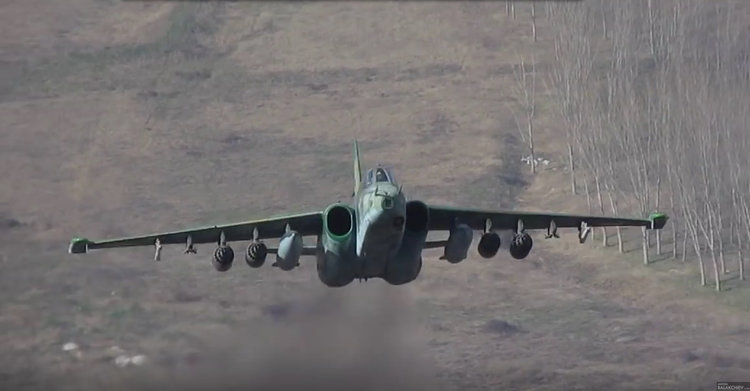Bulgarian Air and Air Defence Forces
The Bulgarian Air Force operates about 330 front line combat aircraft, 85 helicopters, 20 transport and over 100 training aircraft as well as about 85 air defence missile systems. Although the equipment is mostly dated by 1994, maintenance and training standards are high. The primary focus of the air force is to look south towards Greece and Turkey, where friction at the border is common. Although there are no Soviet air elements hosted on Bulgarian bases, plans are in place for immediate reinforcement in the event of war.
Organized into two Air Defence Divisions and one Composite Aviation Corps, the force has two distinct and separate roles: The two Air Defence formations concentrating on Air Superiority while the deployable Aviation Corps is specifically tasked to support the Army.
(Note that some consolidation of various types has occurred in the Northern Fury world, primarily this eases scenario construction and clutter with little material difference. Although numbers vary by source, given the political situation I tend to err on the side of enhancement.)
MiG-21
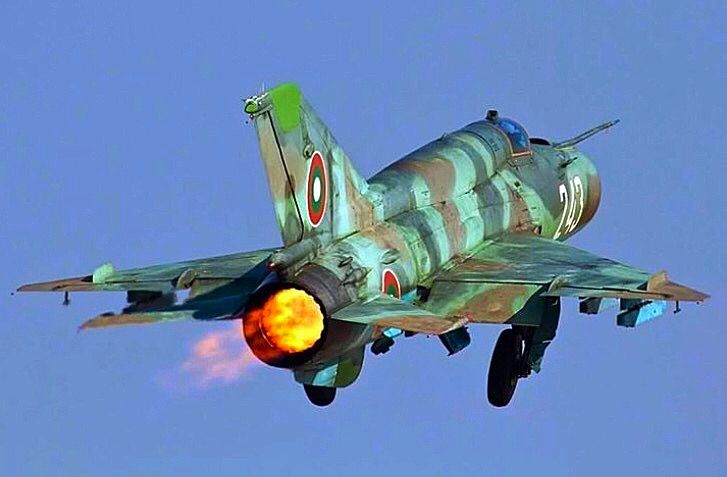
Although these are dated and primarily used in the ground support role, one squadron remains in the air defence structure. The plan is to replace these aging aircraft with MiG-29 for air defence and MiG-27 for ground support, but that will not happen before war breaks out in 1994. The oldest of the MiG-21’s remaining in service are the Air Defence MiG-21PFM ‘Fishbed F’, these are improved 1st generation interceptors with a belly mounted gun pod and obsolete missiles. Only one Sqn remains but there are many in reserve.
There are two versions of 2nd generation MiG-21s in service. Bulgaria only operated six MiG-21RF Fishbed-H, this reconnaissance variant is sometimes considered the ultimate 1st generation Fishbed, but it had the typical ‘Fat’ spine of later aircraft. More common was the MiG-21MF Fishbed-J, a ground attack version which could carry a wide selection of munitions, this aircraft had an improved radar and a more powerful engine with a flush mounted gun. (Note that the 48 ‘MF’ represented here include 15 ‘M’ and 20 ‘MF’ variants plus 15 ‘MF’ transferred from the former East German air force.)
The final production aircraft, the Fishbed-L was often called 3rd generation, these were the MiG-21bis or ‘plus’. This version had a much more powerful engine, redesigned airframe and improved avionics resulting in a lighter, stronger and more agile fighter with a look down radar and wider selection of munitions.
Additionally about 30 two seat training variants operated in an air combat training squadron, the MiG-21UM Mongol-B, with equivalent avionics to the 3rd generation MiG-21bis. All fighter pilots spent time on this type to learn the basics of air combat.
| Unit | Formation | Location | Type | No | Remarks |
|---|---|---|---|---|---|
| 1/2nd Trg Sqn | 2nd Cbt Trg Regt | Kamenets AB | MiG-21UM | ~30 | |
| 2/17th Ftr Regt | 2nd AD Div | Balchik AB | MiG-21PFM | 24 | Many in reserve |
| 1/19 Ftr Regt | 10th Avn Corps | Graf Ignatievo AB | Mig-21bis | 24 | |
| 2/19 Ftr Regt | 10th Avn Corps | Graf Ignatievo AB | Mig-21bis | 24 | |
| 1/21 Ftr Regt | 10th Avn Corps | Uzundzhovo AB | MiG-21MF | 24 | Composite variants |
| 2/21 Ftr Regt | 10th Avn Corps | Uzundzhovo AB | MiG-21MF | 24 | Composite variants |
| 1/26th Recon Sqn | 10th Avn Corps | Tolbukhin AB | MiG-21RF | 6 |
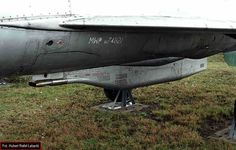
MiG-23
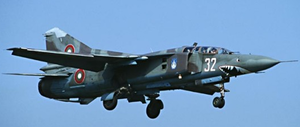
Similarly, there is a variety of MiG-23 Floggers employed in the Bulgarian air force. The variable wing geometry allowed for a very flexible airframe and this ubiquitous aircraft was a workhorse throughout the Warsaw Pact. Although there are a few 1st generation MiG-23MF (probably seven) in the inventory, for Northern fury these have been rolled into a collective group with the two ‘ML’ and nine ‘MLA’ variants. Therefore, one squadron of 18x MiG-23MLA aircraft is represented. These Flogger-G aircraft are 2nd generation, with very capable radars, electronic countermeasures and weapons loads.
Historically, there were also 20 of the much-improved type, the MiG-23MLD Flogger-K, this was the ultimate air to air Flogger available anywhere. Bulgaria had a plan to upgrade all its earlier model interceptors either to the Flogger-K or ideally MiG-29s, but that has not happened yet. In Northern Fury an additional four ‘MLD’ airframes were obtained from the former East Germany to bring one squadron up to full strength of 24.
The other major derivative in use was the ground attack MiG-23BN Flogger-H. Although envisioned as an interim adaptation for this role, these aircraft proved quite effective and popular, but fell short of the capabilities shown by the later MiG-27. Bulgaria wanted the MiG-27 and was pushing Moscow for priority but was unable to pry them away from the Soviets, so in consolation they were able to obtain 40 of the Flogger-H.
Additionally, Bulgaria operated 15 MiG-23UB Flogger-C training aircraft. About half were maintained at the Combat Training school while the rest were sprinkled around the squadrons to allow pilots to maintain qualifications. These were not used in combat.
| Unit | Formation | Location | Type | No | Remarks |
|---|---|---|---|---|---|
| 1/18th Ftr Regt | 1st Air Div | Dobroslavtsi AB | MiG-23MLA | 18 | Composite variants |
| 2/18th Ftr Regt | 1st Air Div | Gabrovnitsa AB | MiG-23MLD | 24 | 4 new from GDR |
| 1/25 Ftr/Bmr Regt | 10th Avn Corps | Cheshnegirovo AB | Mig-23BN | 18 | |
| 1/25 Ftr/Bmr Regt | 10th Avn Corps | Cheshnegirovo AB | Mig-23BN | 18 |
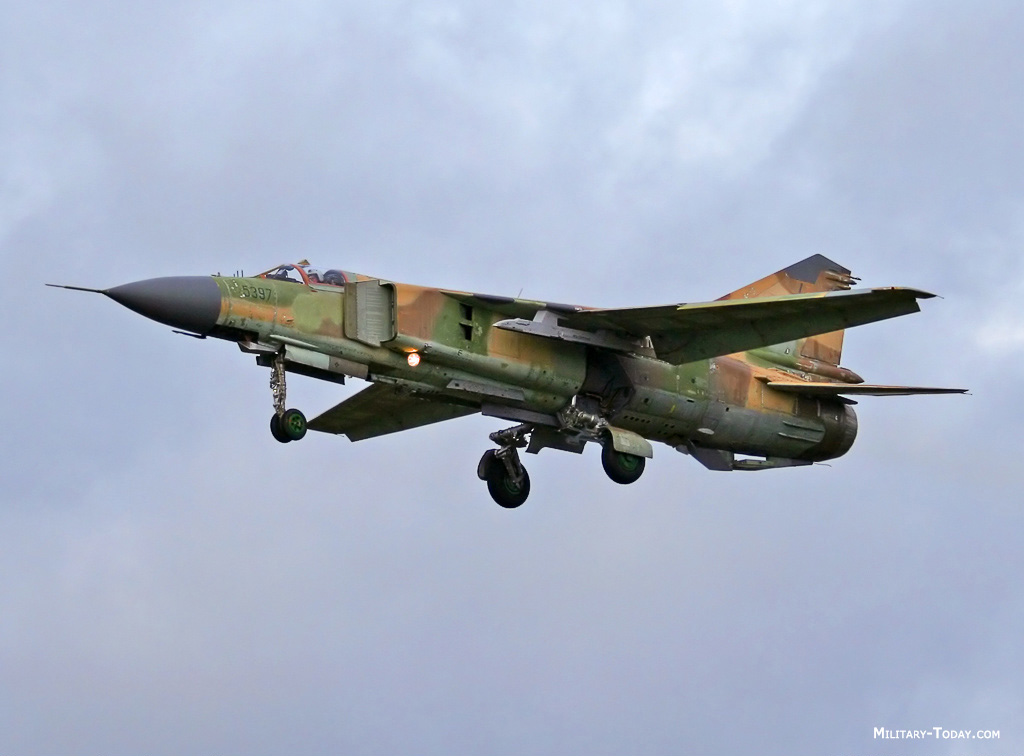
MiG-29
By far the most modern and capable aircraft in the Bulgarian inventory is the MiG-29A. A true multi-roll 4th generation aircraft able to match NATO air superiority fighters on a nearly equal bases, this aircraft was very advanced, highly maneuverable, and quite rugged. Historically Bulgaria received 12 Fulcrum A plus 4 two seat ‘UB’ trainers by 1994, while in Northern Fury the schedule for an additional six has been advanced and they are available. The primary task is to counter Turkish and Greek F-16s and they are deployed almost exclusively in the Air Defense role.
| Unit | Formation | Location | Type | No | Remarks |
|---|---|---|---|---|---|
| 2/17th Ftr Regt | 2nd Air Div | Ravnets AB | MiG-29A | 18 | |
| MiG-29UB | 4 | Combat capable |
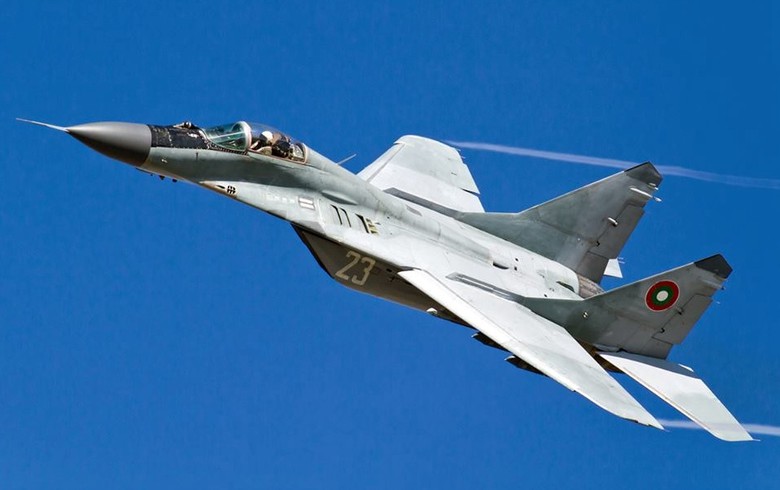
Su-22
A dedicated ground attack aircraft, the variable geometry Su-22M-4K Fitter arrived in the late 1980s to replace some vary obsolete aircraft types. These aircraft specializes in low level, high speed deep strike and interdiction missions and were a major enhancement for the Bulgarians. As the ultimate evolution of this type, the ‘4K’ was capable of delivering a decent bomb load, was easy to maintain, and could sustain tremendous abuse and survive. The 18 aircraft in service were employed in the strike/reconnaissance role, having the ability to conduct high speed low altitude reconnaissance as well as bombing tasks. Additionally, four Su-22UM-3K two seat trainers were used by the Squadron.
| Unit | Formation | Location | Type | No | Remarks |
|---|---|---|---|---|---|
| 2/26th Recon Sqn | 10th Avn Corps | Tolbukhin AB | Su-22M-4K | 18 | |
| Su-22UM-3K | 4 |
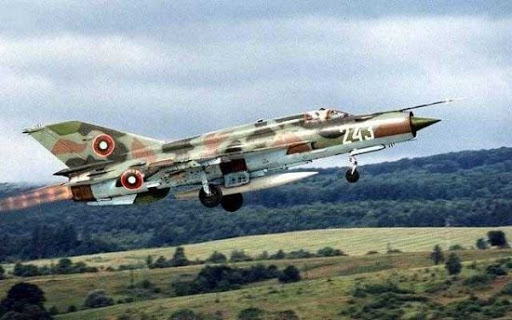
Su-25
While the Fitters concentrated on deep strike missions, another dedicated ground attack aircraft, the Su-25 Frogfoot specialized in close support of ground forces. Readily identifiable as the Soviet answer to the American A-10 Warthog, the Frogfoot is an agile, rugged and extremely capable bomber. Historically Bulgaria operated 32 Su-25K plus four Su-25UBK training variants, but in Northern Fury they have received an additional four bringing the total to 36 front line aircraft with the training versions held at the Regimental level.
| Unit | Formation | Location | Type | No | Remarks |
|---|---|---|---|---|---|
| 1/22nd Ftr/Bmr Regt | 10th Avn Corps | Bezmer AB | Su-25K | 18 | |
| 2/22nd Ftr/Bmr Regt | 10th Avn Corps | Bezmer AB | Su-25K | 18 |
